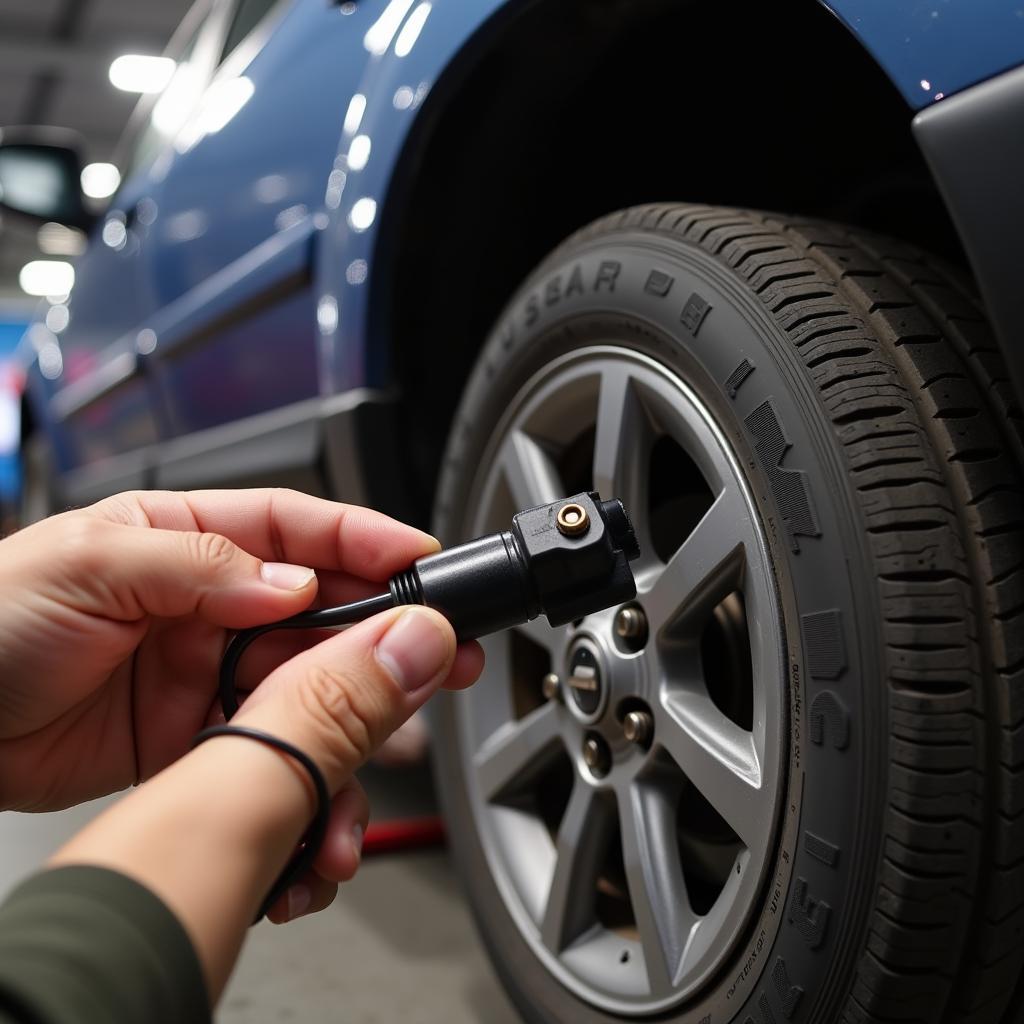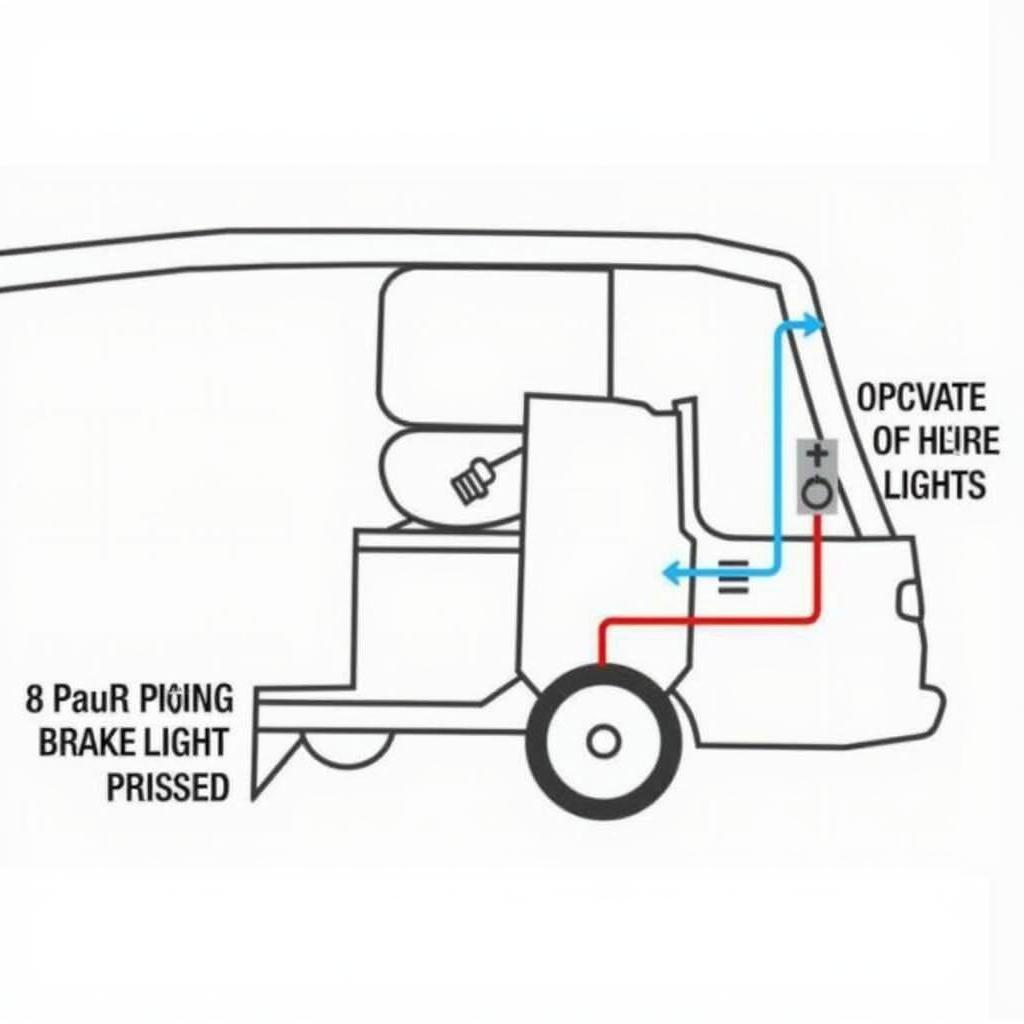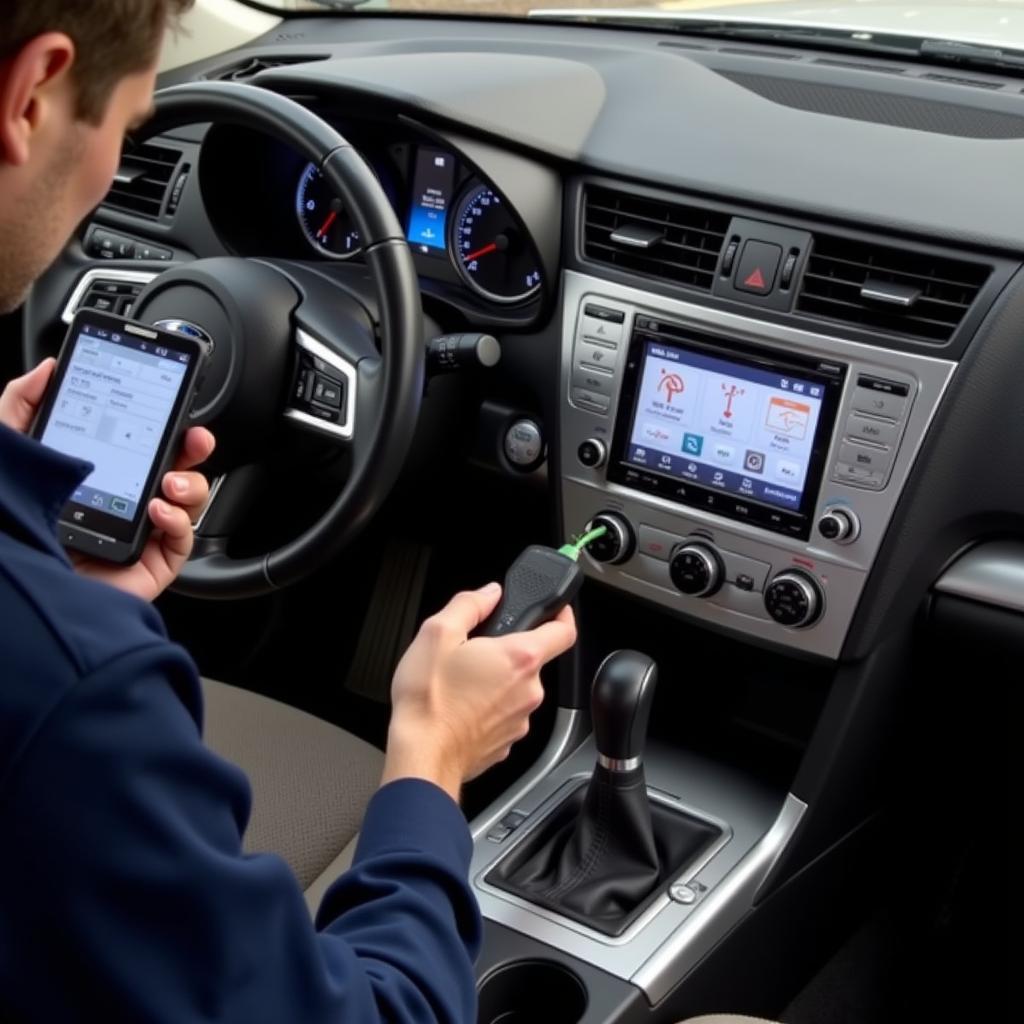You’re driving down the road, enjoying the smooth ride of your 2012 Subaru Outback, when suddenly, you see them—the dreaded VDC and brake warning lights illuminated on your dashboard. Your heart might skip a beat, but don’t panic. This guide will walk you through the possible causes and solutions, empowering you to tackle this issue head-on.
Understanding the Warning Lights
Before diving into the specifics, let’s decode what these warning lights are trying to tell you:
- VDC (Vehicle Dynamics Control): This system acts as your co-pilot, constantly monitoring your Outback’s stability and stepping in to help maintain control during slippery conditions or emergency maneuvers. The VDC light indicates a potential issue within this system.
- Brake Warning Light: This light can signify various problems related to your braking system, from low brake fluid to more serious issues like a malfunctioning ABS (Anti-lock Braking System).
Seeing both lights illuminated simultaneously is a strong indicator that the issues might be connected.
Common Culprits Behind the Warning Lights
Several factors can trigger the VDC and brake warning lights in your 2012 Subaru Outback. Here are the most common culprits:
1. Faulty Wheel Speed Sensor
 Faulty Wheel Speed Sensor on a Subaru Outback
Faulty Wheel Speed Sensor on a Subaru Outback
The wheel speed sensors, often targeted by road debris and corrosion, play a crucial role in both the VDC and ABS systems. They constantly measure each wheel’s rotational speed, providing data to these systems for optimal performance. A malfunctioning sensor can disrupt this data flow, leading to the illumination of both warning lights.
2. Low Brake Fluid
Brake fluid, the lifeblood of your braking system, transmits the force from your foot pedal to the brakes. If the fluid level drops, usually due to a leak, it can trigger both the VDC and brake warning lights. Regularly checking and topping up your brake fluid is crucial.
3. Malfunctioning Brake Light Switch
 Brake Light Switch Diagram
Brake Light Switch Diagram
The brake light switch, activated when you press the brake pedal, not only turns on your brake lights but also sends a signal to the VDC system. A faulty switch can disrupt this signal, leading to the simultaneous illumination of both warning lights.
4. Steering Angle Sensor Issues
The steering angle sensor tells the VDC system the direction you’re steering. If this sensor malfunctions, it can confuse the VDC system, potentially triggering the warning light.
5. Faulty Yaw Rate Sensor
The yaw rate sensor, a key component of the VDC system, measures your Outback’s rotation around its vertical axis. This sensor helps the VDC system detect and correct oversteer or understeer situations. A malfunctioning yaw rate sensor can disrupt this process, causing the VDC warning light to illuminate.
6. Battery or Alternator Problems
Though seemingly unrelated, a weak battery or a failing alternator can cause various electrical gremlins in your Outback, including triggering warning lights like the VDC and brake light.
Diagnosing the Problem
Identifying the root cause behind the illuminated warning lights requires a systematic approach:
-
Check Your Brake Fluid: This simple check can be a quick win. If the fluid level is low, refill it to the appropriate level. However, if you notice a consistent need to top up the fluid, it indicates a leak that requires immediate professional attention.
-
Inspect Your Brake Lights: If you suspect a faulty brake light switch, have someone press the brake pedal while you check if the brake lights are working correctly. If they’re not, the switch likely needs replacement.
-
Scan for Trouble Codes: Most auto parts stores offer free OBD-II code scanning. Connecting a scanner to your Outback’s diagnostic port can reveal valuable trouble codes stored in the car’s computer, pinpointing the problematic area.
-
Consult a Professional: If the issue persists or seems complex, seeking help from a qualified mechanic specializing in Subaru vehicles is advisable. They have the expertise and tools to diagnose and repair the problem accurately.
 Mechanic Connecting OBD2 Scanner
Mechanic Connecting OBD2 Scanner
Addressing the Issue
Once you’ve identified the root cause, resolving the issue often involves:
-
Replacing Faulty Components: Whether it’s a faulty wheel speed sensor, brake light switch, or any other component, replacement with a new, high-quality part is usually the most effective solution.
-
Repairing Leaks: Addressing brake fluid leaks often involves identifying and replacing damaged brake lines, hoses, or seals. This repair is best left to professionals to ensure the safety and reliability of your braking system.
-
Software Updates: In some cases, a simple software update for your Outback’s VDC or related systems can resolve software glitches that might be triggering the warning lights.
“Regular maintenance is key to preventing many of these issues. Sticking to your Subaru’s recommended maintenance schedule, including brake fluid flushes and inspections, can save you headaches down the road,” advises John Miller, a seasoned Subaru mechanic with over 15 years of experience.
Conclusion
Seeing the VDC and brake warning lights illuminated in your 2012 Subaru Outback can be concerning, but it’s crucial to remember that these lights are your car’s way of communicating a potential issue. By understanding the potential causes, systematically diagnosing the problem, and addressing it promptly, you can ensure a safe and enjoyable driving experience in your Outback.
